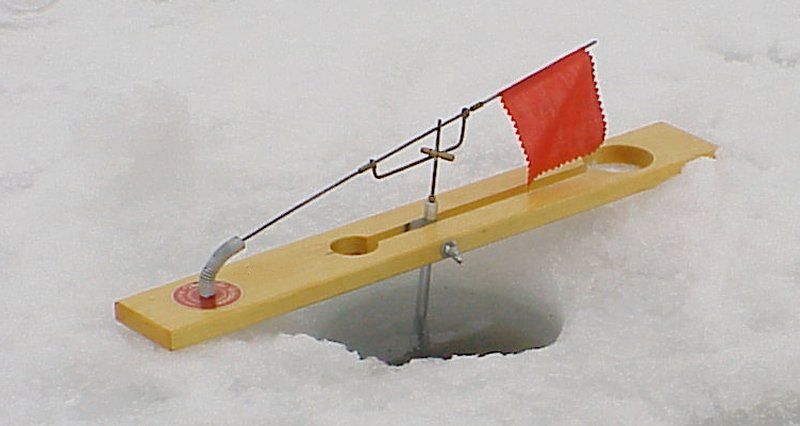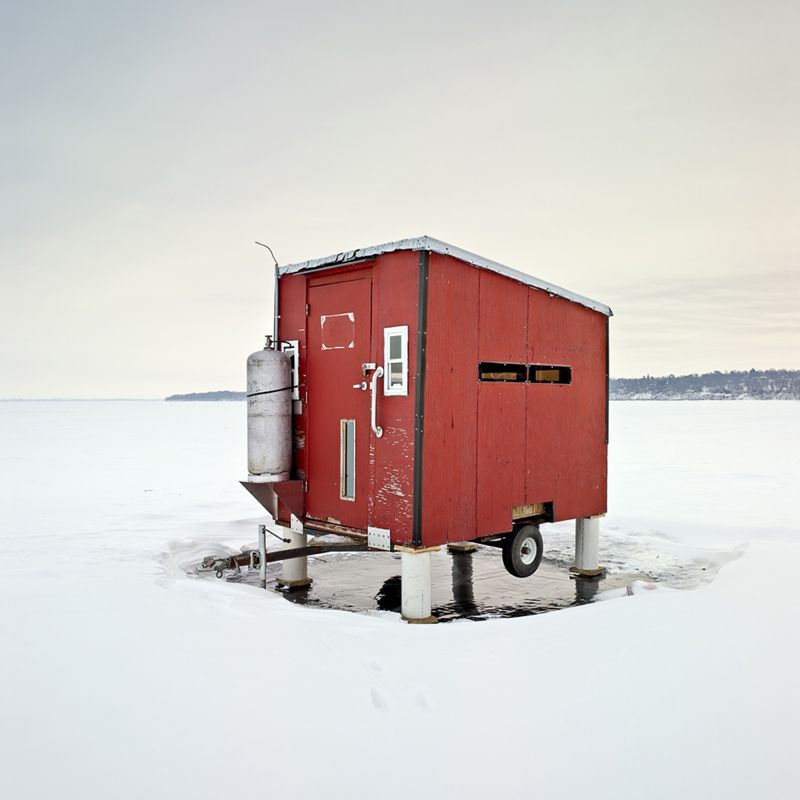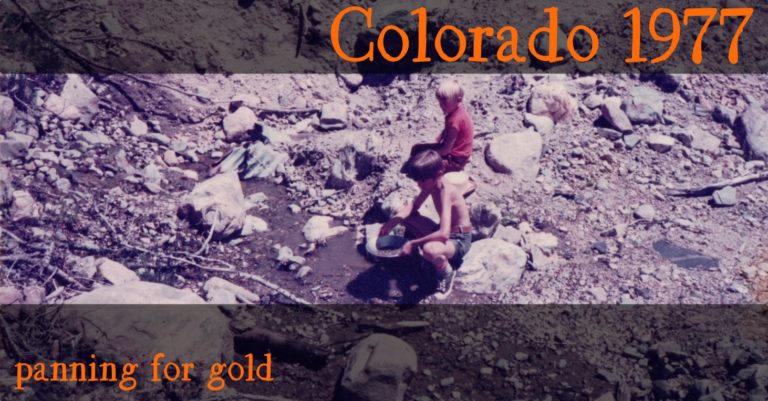The Understated Elegance of Ice Fishing Shanties
To many people who haven’t ever had the singular experience of living through a long upper Midwestern winter, ice fishing is a baffling activity. I grew up in Wisconsin, so driving a heavy vehicle onto a frozen lake and cutting a hole in the ice to try your skill (or luck) at catching a few of the fish swimming beneath your feet seems like perfectly normal behavior to me.
I have many memories of setting up tip-ups over freshly-carved holes in the ice and retreating to relative warmth of grandpa’s ice shanty where we sipped hot chocolate while waiting for the little flag to spring up, letting us know a fish had taken the bait.

So it should come as no surprise that I really enjoyed 10 Weeks, Ice Fishing in Wisconsin, Mike Rebholz’s series of revealing photographs featuring Wisconsin ice shanties.

In an interview at The Spaces, Rebholz explains why these small, temporary shelters appeal to him so much:
“There was also the appeal of the intensely hand-crafted and idiosyncratic nature of these little buildings. No two are alike and each represents a collision of the builder’s personality, economics, and the materials at hand. What perfect individual expression in a utilitarian structure.”
I. too, have always had a soft spot for these little shacks, which crop up on the ice of any mid-sized body of water throughout Wisconsin shortly after the first solid freeze.

If, like me, you have a certain nostalgia (or just a simple curiosity) about ice fishing in general or ice shanties in particular, there are eight of Rebholz’s portraits along with his interview on The Spaces and even more images you can see at the 10 Weeks, Ice Fishing in Wisconsin gallery on his site.





